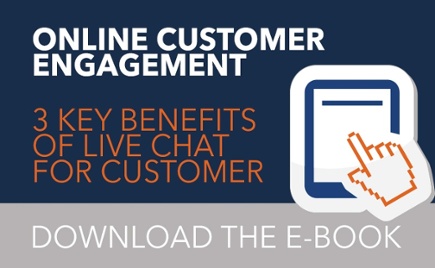
Despite banks’ improvement of customer experience recently, there is still much to be desired as revealed in Capgemini’s World Retail Banking Report for 2016.
Their survey for banking customers found that while many have experienced an improvement in customer experience, profitable customer behaviour increased only marginally. The survey also found that banks have scored lower in customer experience from their Generation Y or millennial customers compared to Gen X customers.
Customer experience encompasses a wide range of factors that can ultimately decide for your customer whether it’s worth it to continue banking with you or should they jump ship over to the other bank that’s reputed to treat it’s customers better. One of those key factors is your customer service.
Today, the retail banking market is experiencing a change in behaviour due mostly to the increasing influence of the millennial market share. They have different customer service expectations compared to their Gen X predecessors. One of those is in the way they communicate. Unfortunately, many banks still use or at least focus on customer service channels that are beginning to be either obsolete or are on decline.
Here are some of the obsolete communication channels still used by banks today:
1. Fax
Despite the increasing technological advancements found in the workplace, there are still some communication methods that refuse to die and one of those is fax. The use of fax machines is particularly difficult to eradicate especially in industries that’s resistant to change. Governments and banking are just some of these. There are of course valid reasons for maintaining a fax line. After all, internet penetration throughout any market isn’t 100% guaranteed yet and sometimes, fax is the only way to send copies of documents to another place other than snail mail.
In my opinion, it’s all a matter of going back to your target customer and asking yourself whether what you are doing (in terms of customer service) is relevant. If you are leaning more towards having a millennial focus, then you might want to ask yourself if you really need that fax line. It could be a different story if you are a commercial bank.
2. Email
This might be something you haven’t expected, but using email as a means of customer communication or customer service is less than optimal. Sure, email is still the prefered communication channel for most things professional. However, today’s customer service needs show that more and more people want answers fast. Aside from that, it’s also hard to build rapport.
Email is disconnected. Customers don’t know and aren’t guaranteed when their inquiries will be answered. While we aren’t necessarily advocating removing an email address in your “Contact Us” page just yet, we just want to remind you that you shouldn’t make it your PRIMARY mode of customer service. Keep an email address there, but be sure to give your customers a more convenient, interactive or faster way to reach you (think live chat or web call-back).
3. Traditional contact centres
Don’t panic! We’re not including all kinds of call centres. Just the ones that make customers wait 5, 10, 30 minutes on the phone while forcing them to listen to the same flute solo again and again. Of course at one point, call centres provided bank customers the best personalized customer service even through remote locations. But now, there are faster and more efficient ways to serve customers.
There are more contact centres that, with the help of technological tools, can reduce waiting times to mere seconds or if unavailable, instead of making customers wait on standby, they can request to be called back later. Whether you have an in-house or outsourced call centre, you need to make sure you have the least amount of waiting times.
Conclusion
You’ve just read the 3 obsolete communication channels that are still used by banks today to provide customer service. Maintaining obsolete customer engagement channels makes your customer service investment stretched and inefficient. It’s time to focus on the channels that matter.
Of course, if you have any of the channels mentioned above, we’re not advocating their complete abandonment. After all, customers don’t just all collectively decide one day to stop reaching you using fax or through a customer service representative meeting. These happen gradually and you’ll have to know which of your channels are still relevant and which are declining. Based on that, you can re-focus your customer service investments to channels that can better serve your customers.
Follow Us:



